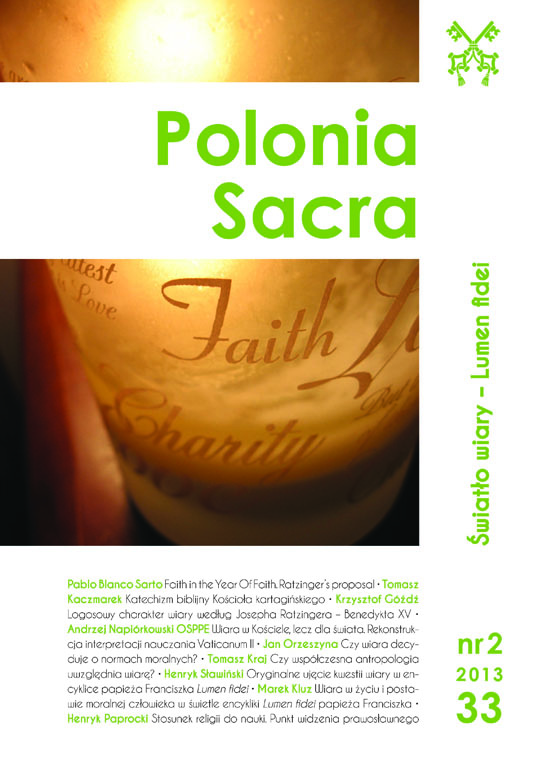Wiara w Kościele, lecz dla świata. Rekonstrukcja interpretacji nauczania Vaticanum II
DOI:
https://doi.org/10.15633/ps.366Słowa kluczowe:
sobór, Kościół, wiara, świat, współczesny człowiekAbstrakt
With more and more time perspective, it is easier and more correctly to read the meaning and spirit of the Second Vatican Council (1962–1965). The article shows that it was not dogmatic or even pastoral – as it is often said to be. Its main aim was to develop a new relationship between the Church and the modern era, between Christianity and the essential elements of modern teaching. For popes John XXIII and Paul VI it was not important to conform to the world, but to present and remind modern man – inclined to move away from God – the importance of Gospel’s Truth in all its purity. Therefore Vatican II defined firstly, the relationship between faith and modern teaching, secondly, established the relationship between the Church and the modern state, and finally, differently specified the relationship between Christian faith and religions in the world. Despite many tensions between the socalled “traditionalists” and “progressives”, the Council was ultimately a brilliant event of the Holy Spirit and human effort, renewing the face of the Church and the hearts of Christians especially in the modern perspective of faith. The Council opened the Church for people thanks to the call of enlarging the faith in Jesus Christ.Pobrania
Opublikowane
2013-11-30
Numer
Dział
Artykuły tematyczne
Licencja
Prawa autorskie (c) 2013 Andrzej Napiórkowski

Utwór dostępny jest na licencji Creative Commons Uznanie autorstwa 4.0 Międzynarodowe.
Autorzy publikujący w czasopiśmie udzielają jego wydawcy zgody o następującej treści:
- Autor zachowuje autorskie prawa majątkowe do utworu, a jednocześnie udziela wydawcy czasopisma zgody na jego pierwszą publikację w wersji drukowanej i wersji online na licencji Creative Commons Uznanie autorstwa 4.0 Międzynarodowe oraz zgody na wykonywanie opracowań, w tym przekładów.
- Autor ma możliwość udzielania zgody niewyłącznej na opublikowanie utworu w wersji, która ukazała się w czasopiśmie (np. zamieszczenia go w repozytorium instytucjonalnym lub opublikowania w książce), wraz z informacją o jego pierwszej publikacji w czasopiśmie.
- Autor może umieścić swój utwór online (np. w repozytorium instytucjonalnym lub na swojej stronie internetowej) jeszcze przed zgłoszeniem utworu do czasopisma.
Jak cytować
Napiórkowski, A. (2013). Wiara w Kościele, lecz dla świata. Rekonstrukcja interpretacji nauczania Vaticanum II. Polonia Sacra, 17(2), 53–69. https://doi.org/10.15633/ps.366

